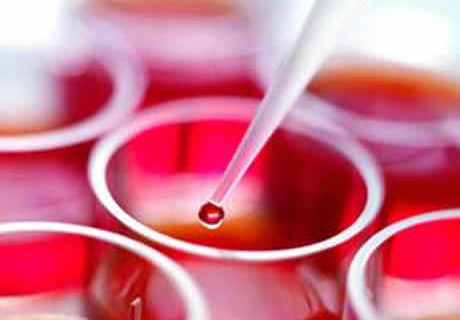
Fifteen Cell and Stem Cell Therapies in Phase III Clinical Trials – Part I
Last week, The Dish posted a blog titled “Biologics Have a Robust Pipeline According to Latest PhRMA Report,” where we discussed highlights from the Pharmaceutical Research and Manufacturers of America’s new report, “Medicines in Development – Biologics, 2013 Report.” In the report, 69 cell therapies were identified as having clinical trials under review with the Food and Drug Administration (FDA), including 15 in Phase III clinical trials. Of the therapies listed, nine therapeutic categories were represented and include: cardiovascular disease, skin diseases, cancer and related conditions, digestive disorders, transplantation, genetic disorders, musculoskeletal disorders, eye conditions, and other.
The purpose of this blog is to give an overview of these therapies, the diseases states they are treating, the technologies they employ, and the companies who are working to bring these products to market. The review will be broken into three parts, each covering five therapies, so look for parts II and III next week.
Prochymal – Stem Cell Therapy
Sponsor – Osiris
Graft vs. Host Disease (GvHD)
Prochymal for treatment of Graft vs. Host Disease (GvHD) has been approved in Canada and New Zealand and is currently in Phase III clinical trials in the United States. It has received Fast Track review from the Food and Drug Administration (FDA). GvHD can occur during stem cell or bone marrow transplants. The immune cells present in the transplant view the cells in the patient receiving the transplant as foreign and begin to attack the patient’s tissues and organs. GvHD can cause serious disability and can even be fatal. It is a frequent complication and occurs in about half of the transplants.
Crohn’s Disease and Gastrointestinal Injury from Radiation
Prochymal is also being evaluated as a therapeutic in Phase III clinical trials for treatment of Crohn’s Disease, for which it has received Fast Track status from FDA, and gastrointestinal injury from radiation. Crohn’s disease is an inflammatory disease that affects the colon and small intestine. This disease can cause abdominal pain, weight loss, vomiting and diarrhea.
Osiris’s Prochymal is an allogenic therapy made up of mesenchymal stem cells derived from donor bone marrow. The cells are isolated and expanded and Osiris states that one donation can yield 10,000 doses. Doses are preserved for storage, after which, they have a two-year shelf life and are delivered to the patient when needed. Cells are infused into the patient and treatment takes thirty minutes to infuse one dose.
Mesenchymal Precursor Cell (MPC) Product – Stem Cell Therapy
Sponsor – Mesoblast
Bone Marrow Transplant
Mesoblast’s MPC product for Bone Marrow Transplant is currently in Phase III clinical studies and has received Orphan Drug Designation. In this therapy, Mesoblast’s bone marrow-derived allogeneic MPCs are used as a feeder layer in combination with hematopoietic growth factors to expand and differentiate hematopoietic precursors from cord blood. According to the Mesoblast website, there are approximately 55,000 bone marrow transplant procedures performed worldwide and today more than 70% of people who could use an unrelated donor transplant do not receive one as a fully matched donor cannot be found. In addition, this therapy has the potential to greatly reduce Graft vs. Host Disease, which is a common side effect of bone marrow transplant. Mesoblast allogenic stem cell treatment consists of adult mesenchymal precursor cells derived from bone marrow or other tissue sources.
MyoCell – Stem Cell Therapy
Sponsor – Bioheart
Congestive Heart Failure
Bioheart’s Myocell, is currently in Phase II/III clinical trials as a treatment for congestive heart failure. The treatment is injected after heart attack to improve cardiac function. Bioheart uses muscle stem cells (myoblasts) and have announced a next generation version of this product called Myocell SDF-1. Myocell SDF-1 is similar to Myocell, but the cells have been modified to express angiogenic proteins to enhance blood vessel formation. Myocell SDF-1 is currently in Phase I clinical trials.
Bioheart manufactures its autologous Myocell by harvesting a small piece of thigh muscle from the patient, then isolating and expanding the myoblasts. The cells are then injected into the patient’s scar tissue in the heart. The procedure uses an endoventricular needle-injection catheter and is minimally invasive.
ixmyelocel-T – Stem Cell Therapy
Sponsor – Aastrom
Critical Limb Ischemia
Shortly after the PhRMA report was released, Aastrom announced that they would end the Phase III clinical study of ixmyelocel-T as a treatment for Critical Limb Ischemia, which had been granted a Fast Track Designation from FDA. Instead they are choosing to focus on ixmyelocel-T as a treatment for Dilated Cardiomyopathy (DCM) that has completed a Phase II clinical trial and has received Orphan Drug Status from FDA. In a Reuter’s article titled “Aastrom Biosciences ends drug trial, to cut half its workforce,” CEO Nick Colangelo said in a statement, “… The optimal use of our resources at this time is to focus …where clinical development may require smaller studies with lower costs and a shorter path to regulatory approval.”
Aastrom manufactures its autologous stem cell product under cGMP conditions. Manufacturing capacity is currently at 3,000 patients per year. Aastrom manufactures the product by taking a bone marrow sample from the patient, then isolating and expanding primarily CD90+ mesenchymal cells, CD14+ monocytes and alternatively activated macrophages. The cells are then delivered back to the patient either intramuscularly (CLI) or through endocardial catheter injections (DCM). Culture and expansion of the cells takes 12 days and administration to patient happens within 3 days of manufacture.
I hope that this review will be useful in identifying the types of cell therapies that are in late stage trials. It has certainly been very interesting for me and I was impressed with the advances being made in this area. I will post part II and III of this blog next week with the remaining 10 therapies covered.
In the meantime, which of these therapies do you think is the most promising? Which would be the most significant?